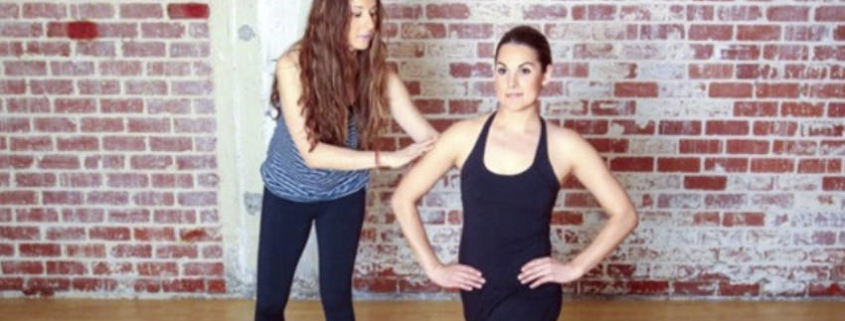Curtsy Lunges
‘Keeping your knees healthy and symptom free begins with developing a functional understanding of how this unique joint is constructed (anatomy) and how it does and doesn’t function (biomechanics)’
Lunges are excellent dynamic strength exercises for the lower body but can cause pain if not performed properly.
The curtsy lunge is like the standard lunge, but your rear foot moves backward, crossing it behind the front leg, planting the ball of your rear foot about half a metre across the midline as though you were about to curtsy. In this movement the knee travels across the body vs. the traditional forward and backward motion. The weight used in the exercise has to be lowered drastically. Not just because your muscle can’t handle it, but because there is no chance for your muscles and body’s passive structures to exert enough force in such an extreme, anatomically disadvantageous position.
The curtsy lunge exercise negates one foundational rule of biomechanics. To encourage proper movement pattern, function, and strength, the knee joint, hip joint, and shoulder joint should be kept in alignment with one another the entire time while bearing load. For the grand majority, this will produce unwanted stress since the hip socket doesn’t align with this movement angle or pattern. Consequently, the IT band and TFL will take a loaded stretch.
Increased rotation of the knee causes excessive overstretching or twisting of the ligaments or tendons or increased shearing forces on the bursa surrounding the knee, then ligament strain, tendinitis, meniscus tears, bursitis, iliotibial band and patella femoral syndrome can occur.
The knee is a hinge-type joint, roughly equivalent to a door hinge, but with a slight rotation to lock it into full extension. The meniscus is located between the femur and the tibia or thigh and leg bone. It actually serves many functions in the knee other than shock absorber. It acts as a stabilizer preventing the lower leg from sliding forward on the femur. As we age our tissues dehydrate and lose some of their natural elasticity and hydration. Tissues become more brittle and can rip easier than when we were young.
Most traumatic meniscal tears occur as a result of a twisting injury when the knee rotates but the foot stays fixed in position. The meniscus can also tear from extreme bending of the knee. The combination of bend, rotation is inadvisable. Be careful when you are in a deep squat not to rotate or twist (also landing in a squat after a jump) as this may pinch the meniscus between the bones and cause a tear. Deep Lunges – In a “running position” where the knee goes past the ankle, Knee ligaments and cartilage are very vulnerable.
Over time, these excessive torsional loads at the knee may lead to accumulative trauma to the cartilage and capsule of the knee joint.
If you’re having trouble finding the best ways to keep your knees healthy, it may be time to consult an osteopath. Through the accurate assessment of the knee injury, specifically the errors in training contributing to the injury, many knee injuries will respond to osteopathic management or refer as necessary. This will include osteopathic treatment (management of abnormal lower extremity biomechanical forces) and specific strength and flexibility rehabilitation.
View a list of common complains that Osteopathy can assist with
Discovery the benefits of Osteopathy
- What is Osteopathy?
- Adult health issues
- Babies and Children
- During and after pregnancy
- Common Complaints
- Testimonials
- Sports Injuries
- Genral Osteopathy FAQs
- The Science & Reasearch



